We often think of kiosks as those tiny, boxy stands at the mall selling movie tickets. Well, that would have been true 10-15 years ago. But let’s be real: kiosks have come a long way since then! Today, when businesses constantly strive to find the best way to engage with their customers, kiosks present innovative and creative solutions.
According to the 2022 Digital-First Customer Experience Report by NICE, a whopping 81% of consumers now expect businesses to offer more self-service options like kiosks. And why wouldn’t they? After all, we’re living in a world where speed and efficiency are everything.
But what is a kiosk exactly, and how can it benefit your business? This blog has answers to all your questions. We’ll walk you through the types of kiosks, break down their benefits (spoiler: they’re more than just time-savers), and how you can choose the perfect one for your business. So, without further ado, let’s dive into it.

What is a Kiosk?
A kiosk is a freestanding booth that you place in areas with high-traffic to interact with more customers. You must have often spotted it in malls, airports, or stations.
The pronunciation of kiosk might seem tricky, but it’s as simple as saying chaos except ending it with a ‘k’. The etymology of kiosk comes from the Turkish word köşk, which means “pavilion”.
Back in the day, a kiosk was nothing more than a cart for selling items.
Now, it’s a great way to offer information about your business or provide self-service options to customers with little to no human intervention.
Previously, kiosks were merely digital directories, but now you can find some with highly interactive digital displays.
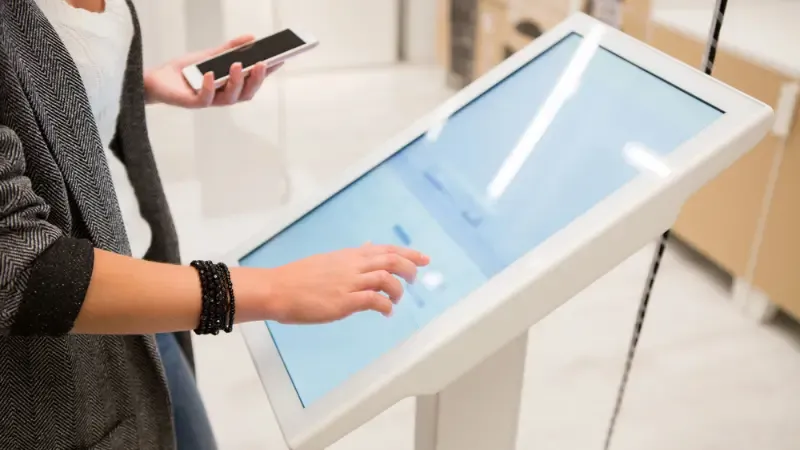
While there are numerous types of kiosk machines we’ll touch upon later in this blog, here are some major categories they fall into:
- Information Kiosks: Businesses use information kiosks to educate customers about their offerings. You could set up a kiosk at any high-traffic area in the neighborhood and display new products or information about your business to increase brand awareness.
- Digital Kiosks: A digital kiosk is like a touchscreen station that helps people get information or services without requiring guidance. Even though digital kiosk is a broad term and many kiosks fall under the umbrella, they all work the same way.
- Interactive Kiosks: An interactive kiosk machine is non-static, which allows customers to engage with it. Restaurants, retailers, and hotels often use them to provide their visitors with an easy way to navigate, find an internet connection or purchase items.
Benefits of Using Kiosks in Your Business
Knowing what is a kiosk isn’t enough information to decide whether it’s worth the investment, right?
The following advantages of kiosks will tell you why it’s a must-have for businesses in this era.
1. Improved Customer Experience
Let’s be honest: happy customers translate into a successful business.
A potential customer is only likely to engage in business with you if you satisfy all their concerns and queries.
Kiosks present a perfect way for them to get all the necessary information.
They are accessible, easy to use, and can offer your customers detailed information about your products and services.
2. Cost Efficiency
The upfront cost of kiosk machines might put you off, but if you look at the bigger picture, they are a total bargain. Think about it.
Your other option is hiring people to share information, but they need breaks, and you’ll have to pay them salaries.
When you add up those salaries and compare them to the cost of a kiosk, you’ll probably end up saving a lot in the long run.
3. Customization & Branding
Making your business thrive in cutthroat competition is no joke. But the good news is that you can customize kiosks to match your brand and business needs.
Customers always have other options, but you don’t want them choosing someone else. The best way to stay top of mind is by strengthening your brand presence.
Branded kiosks in high-traffic areas do exactly that.
Even if people don’t use them right away, they’ll remember your name. And when they need what you offer, guess which business they’ll think of first? Yours.
4. Data Collection
When customers interact with your kiosk, the machine will gather data on their preferences, needs, and behavior patterns.
Later on, you can use this information to optimize your strategies and improve your services to perform better.
Types of Kiosks and Their Applications
Kiosk machines are not a one-size-fits-all solution. Instead, there are different types of kiosks to accommodate various business needs.
Here are a few types of kiosks, the purpose they serve, and their applications you should be aware of.
1. Information Kiosks

An information kiosk is designed to provide users with useful information in an easy and accessible way.
It acts like a virtual guide to help people find what they need without having to ask someone.
You’ll commonly find these kiosks in theme parks, museums, and shopping malls, where they act as wayfinders.
2. Self-Service Kiosks

A self-service kiosk allows customers to complete their shopping or transactions without needing help from a store employee.
Instead of waiting in long lines or looking for assistance, they can simply walk up to the kiosk, follow the on-screen instructions, and get things done quickly.
You’ll find self-service kiosks in all kinds of industries, but they can be more commonly found in hotels, grocery stores, restaurants, and convenience stores.
3. Digital Signage Kiosks
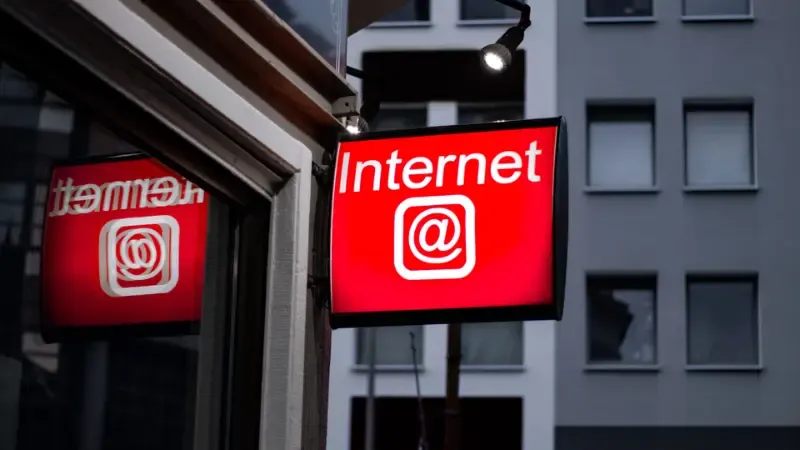
Digital signage is a modern way for businesses to share promotional messages with customers.
Unlike traditional printed ads or posters, digital signage is dynamic and interactive.
Instead of just looking at an ad, customers can tap the screen to learn more about a product, see special offers, or even find where to buy it in the store.
Digital signage is widely used across different industries.
Retail stores use it to display new arrivals and limited-time sales. Restaurants showcase digital menus that can be updated with daily specials. The list goes on and on.
4. Interactive Kiosks
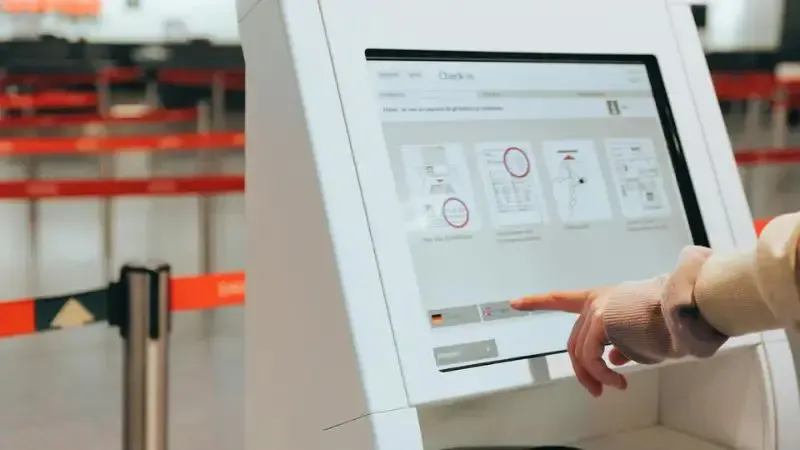
Interactive kiosks are digital stations that customers can actively interact with instead of just viewing static information.
These kiosks allow users to touch, browse, and interact with the screen to complete tasks on their own.
Many industries use interactive kiosks, including retail stores, restaurants, malls, and airports.
In shopping centers and airports, they help people find their way by providing maps and directions.
In restaurants, they allow customers to place their own orders.
Hotels and businesses use them for self-check-in, so the process is faster and more convenient.
Some kiosks even offer internet access so users can browse online or check important information.
Key Features to Look for in a Kiosk
Just like any other product or service, there are certain kiosk features you simply can’t overlook, no matter what else it offers.

Below are the key features you should always prioritize.
1. User Interface & Experience
Would you buy a high-tech gadget if it was confusing to use? Probably not. The same goes for kiosks.
If a kiosk isn’t easy to use, customers will get frustrated and might avoid it altogether.
But if it’s designed well, it can make the entire experience smooth and enjoyable.
2. Integration Capabilities
For a kiosk to actually help your business (and not just look fancy), it needs to work hand-in-hand with your existing systems.
This means every order, payment, and inventory update flows smoothly between the kiosk and your backend operations.
3. Durability & Security
A kiosk is a long-term investment in your business. So, it needs to be built to last.
Look for a manufacturer like SwiftForce that uses high-quality materials and durable components to ensure your kiosk can handle daily wear and tear without constant repairs.
Security is just as important. Your kiosk will handle customer interactions, payments, and sensitive data, so it needs to be protected against tampering, theft, or cyber threats.
A well-built, secure kiosk keeps your business running smoothly and gives customers peace of mind when using it.
4. Customizability
Customization is what makes a kiosk truly work for your business.
It allows you to tailor it to your brand, your customers, and your ever-changing needs.
After all, every business has its own identity, products, and customer base.
A customizable kiosk lets you match its look and feel to your brand.
5. Maintenance & Support
When you’re buying a kiosk, don’t just look at the product. You must also look at the support that comes with it!
Regardless of what anyone says, your kiosk will need occasional software updates, hardware fixes, or troubleshooting.
And when that happens, you want a manufacturer who has you covered.
How to Choose the Right Kiosk for Your Business
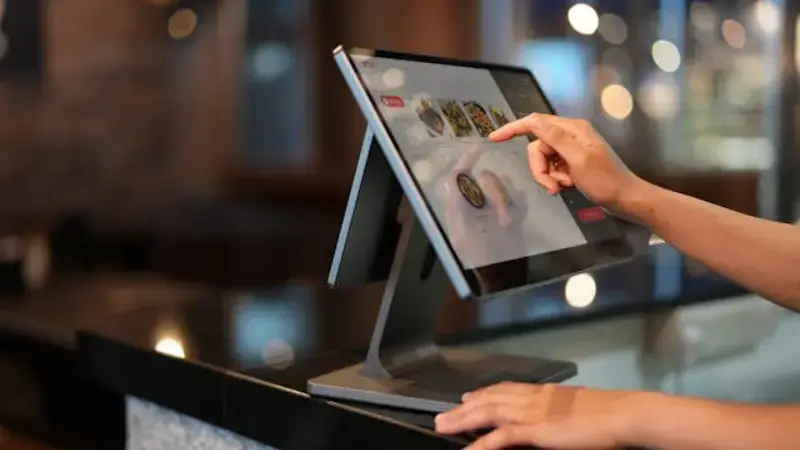
With so many options to choose from, it can be difficult to determine the best type of kiosk for your business.
Here are some ways you can narrow down your choices.
1. Assess Your Needs
Before buying a kiosk, get clear on what you actually want it to do.
Are you looking to speed up transactions, make life easier for your employees, or create a smoother customer experience?
Knowing your goals upfront will help you choose a kiosk that truly benefits your business instead of just looking good in the corner.
2. Consider Your Budget
Kiosk machines come in all shapes and sizes and, of course, price tags. Hence, your budget plays a huge role in helping you choose the right kiosk.
When planning your budget, factor in the initial purchase cost and ongoing expenses like maintenance, software updates, and occasional repairs.
3. Size & Location
One thing businesses often overlook is where they place their kiosks.
However, location can make or break how often customers actually use them.
Try testing different spots and signage to see what works best to make it easy and natural for customers to notice, approach, and use the kiosk without thinking twice.
4. User Demographics
Who will be using your kiosk? Tech-savvy millennials? Senior citizens? Or both?
The answer matters more than you think.
Your audience will shape the kiosk design and how user-friendly the interface needs to be.
A kiosk meant for younger users might include sleek touchscreens and quick digital payments, while one for older customers may need larger text and simpler navigation.
Cost of Kiosk Machines
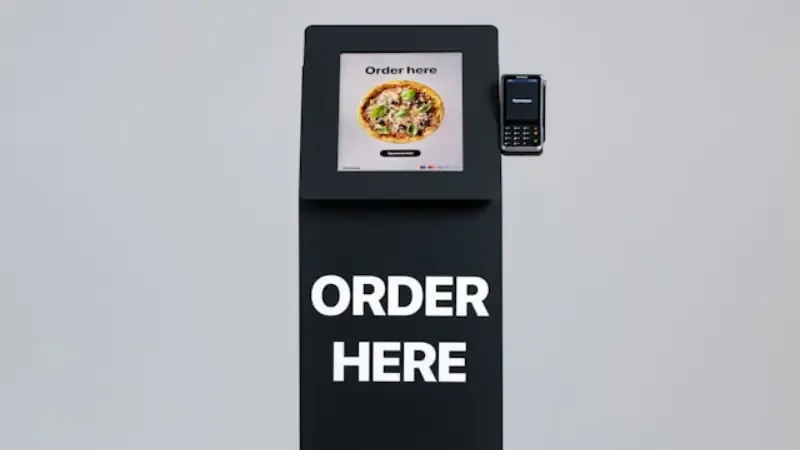
While the cost of kiosk machines can vary from model to model, below are a few parameters that justify that amount on the price tag.
Initial Costs
The upfront costs of a kiosk generally include hardware, installation, and software.
The price may vary depending on the type of kiosk, its features, and the level of customization needed.
Other than budgeting for the kiosk itself, also consider the installation expenses for a more accurate estimate.
Ongoing Costs
Kiosks require regular maintenance to function smoothly.
There are:
- Software updates to keep the system running efficiently
- Hardware repairs in case of malfunctions
- Occasional upgrades to ensure compatibility with newer technologies are all a part of this.
Return on Investment (ROI)
While kiosks surely require an upfront investment, they can pay for themselves over time by improving efficiency and reducing operational costs.
They automate tasks like order processing, ticketing, or customer check-ins, thereby freeing up staff to focus on higher-value tasks.
They can also increase revenue by reducing wait times and improving customer engagement.
Common Challenges in Using Kiosks and How to Overcome Them
Investing in a kiosk is one thing, and managing it completely is another.
You might encounter a few challenges like the following.

1. Technical Issues
Technical issues are always frustrating, and adding a new piece of technology can bring its own set of challenges.
That’s why you must have reliable IT support in place.
Having experts on hand ensures your kiosk doesn’t cause unnecessary headaches for your business.
2. Customer Adaptability
Not every customer will jump right into using a kiosk.
Some might feel unsure about the technology, have accessibility concerns, or just prefer sticking to what they know.
You can ease customers in by having an employee available to guide them until they feel confident using it on their own.
3. Maintenance
Your kiosks will run into problems from time to time if you ignore their maintenance requirements.
Ongoing maintenance isn’t an expense. Instead, it’s an investment in ensuring your kiosk operations run smoothly.
Case Studies & Examples
If you’re still not convinced a kiosk is a smart choice for your business, the following case studies across different industries will change your mind.
Retail

Home Depot has made shopping easier with in-store kiosks that give customers access to their entire product catalog.
Instead of wandering the aisles, customers can quickly search for what they need, check if it’s in stock, and even find exactly where it’s located in the store.
Hospitality
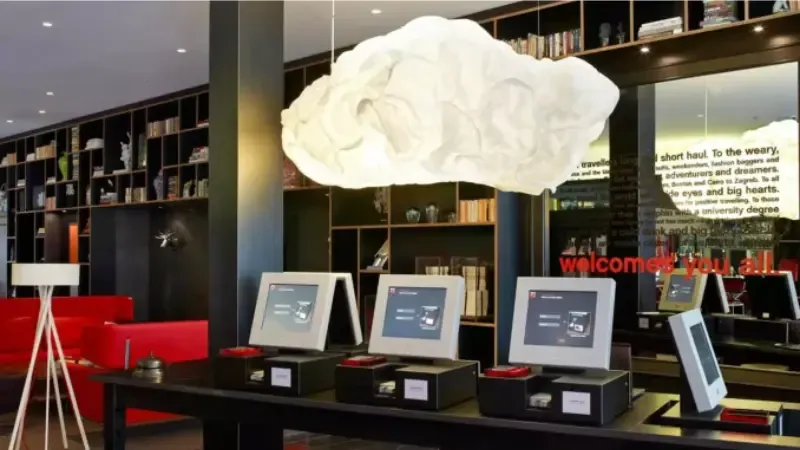
Hospitality Technology found that 61% of customers value faster service, and 59% appreciate shorter lines when using self-service kiosks.
This explains why CitizenM, a modern Dutch hotel chain, has completely replaced the front desk with self-service kiosks for check-in.
Public Services
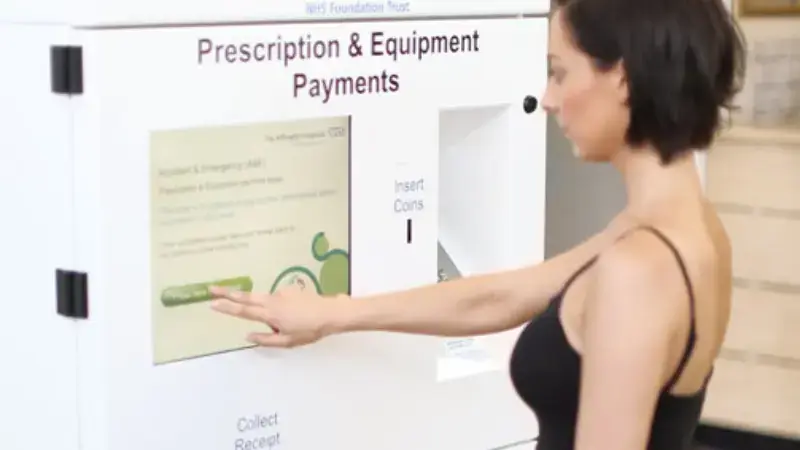
Many NHS hospitals now use self-service payment kiosks to make it easy for patients to pay for, scan images, take prescriptions, and other services quickly and securely.
With their success, more hospitals have started adopting the technology.
Kiosks are the Future of the Business World!
Kiosks can be a game-changer for businesses looking to boost sales and speed up service while reducing staff workload. These machines make life easier for business owners and customers alike.
SwiftForce: Explore our Range of Kiosk Solutions
Now that you know the answer to what is a kiosk, it’s time to add one to your business. Whatever your business needs may be, Swiforce will definitely have the right kiosk machine for you!
Ready to take your business to the next level with kiosks? Contact Swiforce to get started or explore our range of kiosk solutions today!



